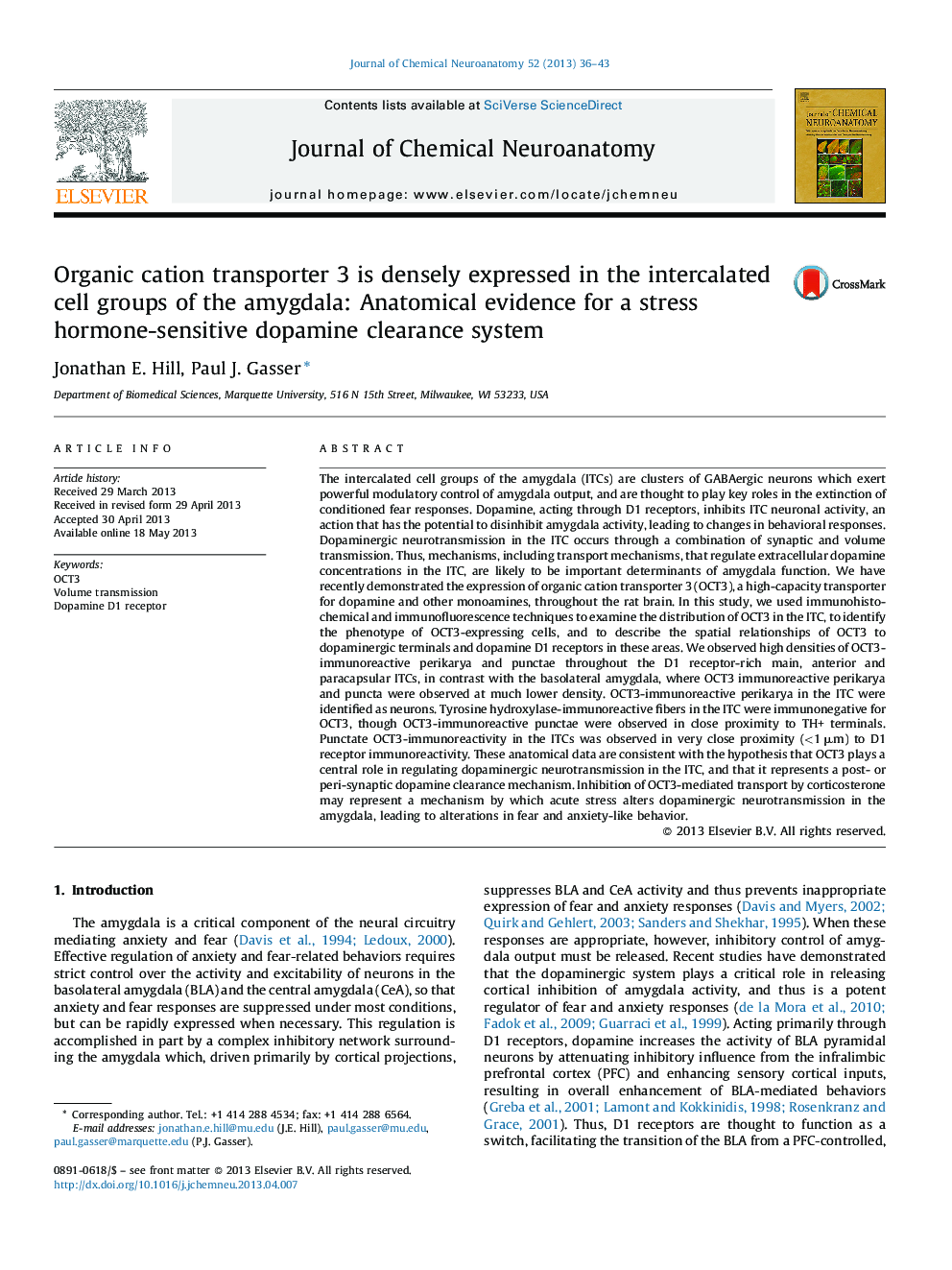| Article ID | Journal | Published Year | Pages | File Type |
|---|---|---|---|---|
| 1988889 | Journal of Chemical Neuroanatomy | 2013 | 8 Pages |
Abstract
The intercalated cell groups of the amygdala (ITCs) are clusters of GABAergic neurons which exert powerful modulatory control of amygdala output, and are thought to play key roles in the extinction of conditioned fear responses. Dopamine, acting through D1 receptors, inhibits ITC neuronal activity, an action that has the potential to disinhibit amygdala activity, leading to changes in behavioral responses. Dopaminergic neurotransmission in the ITC occurs through a combination of synaptic and volume transmission. Thus, mechanisms, including transport mechanisms, that regulate extracellular dopamine concentrations in the ITC, are likely to be important determinants of amygdala function. We have recently demonstrated the expression of organic cation transporter 3 (OCT3), a high-capacity transporter for dopamine and other monoamines, throughout the rat brain. In this study, we used immunohistochemical and immunofluorescence techniques to examine the distribution of OCT3 in the ITC, to identify the phenotype of OCT3-expressing cells, and to describe the spatial relationships of OCT3 to dopaminergic terminals and dopamine D1 receptors in these areas. We observed high densities of OCT3-immunoreactive perikarya and punctae throughout the D1 receptor-rich main, anterior and paracapsular ITCs, in contrast with the basolateral amygdala, where OCT3 immunoreactive perikarya and puncta were observed at much lower density. OCT3-immunoreactive perikarya in the ITC were identified as neurons. Tyrosine hydroxylase-immunoreactive fibers in the ITC were immunonegative for OCT3, though OCT3-immunoreactive punctae were observed in close proximity to TH+ terminals. Punctate OCT3-immunoreactivity in the ITCs was observed in very close proximity (<1 μm) to D1 receptor immunoreactivity. These anatomical data are consistent with the hypothesis that OCT3 plays a central role in regulating dopaminergic neurotransmission in the ITC, and that it represents a post- or peri-synaptic dopamine clearance mechanism. Inhibition of OCT3-mediated transport by corticosterone may represent a mechanism by which acute stress alters dopaminergic neurotransmission in the amygdala, leading to alterations in fear and anxiety-like behavior.
Related Topics
Life Sciences
Biochemistry, Genetics and Molecular Biology
Biochemistry
Authors
Jonathan E. Hill, Paul J. Gasser,
